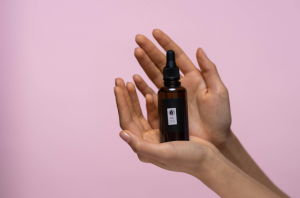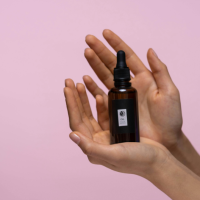
People are not just buying cosmetics; they are investing in their well-being, fairer practices, and the environment. In 2024 Mintel anticipates that the trend of integrating mental well-being into the beauty industry will start to become a mainstream. The consumer desire to know more about a product has steadily been requiring companies to demonstrate both responsibility and accountability as brands align themselves with ethical and sustainable actions when creating products that not only enhance beauty but also respect the planet. So, what’s the evidence? According to Mintel, 81% of Brazilian adults agree that beauty brands should provide more scientific evidence to validate the claims they make; and 47% of Italian adults say they are buying fewer products that they did before due to concerns about the environmental impact of their beauty /grooming routine.
How can brands adapt to 2024’s consumer demands?
 For the average consumer, the first indicator of product’s characteristics is its on-pack claims. To support claims, brands need to share verifiable evidence of responsible practices to validate the claims they make (e.g., through third-party certification), and demonstrate the sustainability characteristics of their product throughout its entire value chain. The chain’s footprint covers everything from cosmetic raw materials to packaging; from transport and distribution to the final point-of-sale; to the way products are used, disposed of and how their waste is managed. The overall organisational and product-based environmental footprint remains a core activity for beauty brands, and this is only set to accelerate.
For the average consumer, the first indicator of product’s characteristics is its on-pack claims. To support claims, brands need to share verifiable evidence of responsible practices to validate the claims they make (e.g., through third-party certification), and demonstrate the sustainability characteristics of their product throughout its entire value chain. The chain’s footprint covers everything from cosmetic raw materials to packaging; from transport and distribution to the final point-of-sale; to the way products are used, disposed of and how their waste is managed. The overall organisational and product-based environmental footprint remains a core activity for beauty brands, and this is only set to accelerate.
Striving to find ways to improve its social and environmental footprint is a non-trivial task, as formulators must balance such expectations with the need to select ingredients that do not compromise a product’s safety, efficacy or sensory profile. Furthermore, the fact that 85% of consumers[1] would be willing to pay more for beauty products with proven efficacy or benefits, also reflects the focus of sustainable consumers on quality (and efficiency) over quantity – the well-known “less-is-more” trend.
The accumulation of such trends means that in 2024 consumers are seeking out:
- Sustainable natural cosmetics: Production linked to resource conservation (i.e.; moving towards waterless products), increased efficiency (i.e.; multi-functionals) and waste reduction (i.e.; upcycling and use of biotechnology); greener methods for active raw material extraction; eco-designed products; and greater use of biodegradable ingredients.
- Reduced and/or more sustainable packaging: minimising waste and curb excess plastic usage through more sustainable packaging solutions include mono-material packaging to facilitate recycling, bio-based plastics, selling bulk/refillable packaging products, investment in prefilled-refillable schemes or even selling products without packaging.
- Innovative and Sustainable formulas: minimalist compositions (few ingredients but in high percentage), multifunctional products, water-free products (like solid bars), cosmetics based on active botanical extracts (e.g., CBD) or microbiome-friendly ingredients – since the “good” bacteria are now recognized to have a role in maintain body and skin health.
Adapting Cosmetics
Whilst the CLP Regulation revision has proceeded to finalisation through its December trilogue negotiations (European Parliament, Commission and Council), the delay to REACH, and removal from the Commission’s 2024 work programme, has been met with criticism from politicians and NGOs alike. The targeted revision of the EU Cosmetics Product Regulation (CPR)started in Q1 2022, and a Regulatory proposal is anticipated in late Q4 2023 or early Q1 2024.
The targeted revision is expected to include:
- Prohibition of ‘known or presumed’ endocrine disruptors (Category 1);
- A new nanomaterial definition (cf. 2022 Commission Recommendation);
- Voluntary digital labelling for certain parts of the current requirements;
Ultimately, the EU CPR is a politically sensitive issue; specifically, the discussion over how to deal with:
- Substances that are respiratory sensitisers and STOT-RE (Specific target organ toxicity – repeat exposure);
- Mixture Allocation Factors (MAFs);
- the ‘Essential use’ concept
Given the European elections in June, consensus in the co-decision process would only be expected after the new representatives of the institutions are in-place (i.e., at the beginning of 2025). Consequently, the earliest application date for the targeted revision, considering an effective transition period, would be 2026-2027.
Empowering Consumers
A provisional agreement from the trilogue phase on amending Directives 2005/29/EC and 2011/83/EU on empowering consumers for the green transition was reached in October 2023. The agreed text reflects aspects from earlier points of discussion related to promotion of third-party certification to deal with non-credible labels and addressing misleading claims concerning environmental (‘greenwashing’) and social (‘social washing’) product characteristics. Given the current timeline, the legislation is expected to be published before the June elections and come into force 30-months after.
Greener Claims
The Green Claims Directive is not only linked to the empowering consumers for the green transition Directive, but also sets specific rules for environmental claims and schemes, as well as promoting third-party certification. The main topics for discussion reflect the ex-ante verification process – whether environmental claims would be allowed on products containing certain substances – and the adequacy of the transition period for the accreditation of a sufficient number of verifiers to control claims. Considering the October 2023 ENVI and IMCO Joint Committee Draft Report, the foreseeable aim of the EU Parliament would be to conclude its negotiating position by April 2024 before the elections.
Recycling and reuse
The revision of the Packaging and Packaging Waste Directive to a Regulation, goes beyond the Directive’s Essential Requirements (reduce waste, design requirements for materials and goods) to include also measures to reduce (over)packaging and packaging waste alongside actions to improve packaging design for reuse and recycling and to drive the uptake of recycled content. Tentative next steps indicate that both institutions (EU Parliament and Council) could reach an agreement on the text before the June elections, followed by a possible publication of the regulation in mid to late 2024 and application 12-months afterwards.
[1] https://lp.euromonitor.com/white-paper/2024-global-consumer-trends/wellness-pragmatists

Article written by Dr Mark Smith, NATRUE Director General, and Paula Gómez de Tejada, NATRUE Communications Officer. It was originally published on Bio Eco Actual’s website (in English)



 Deutsch
Deutsch
 English
English
 Français
Français
 Italiano
Italiano